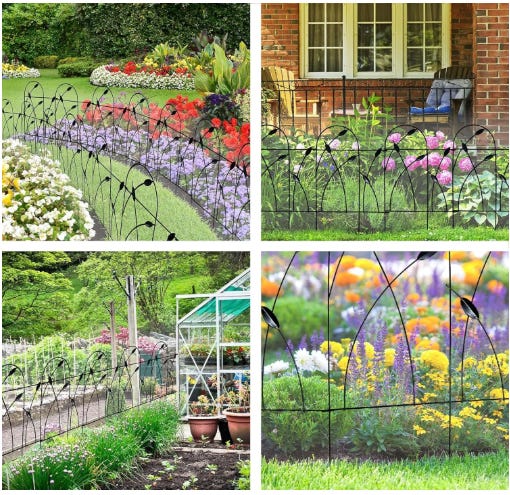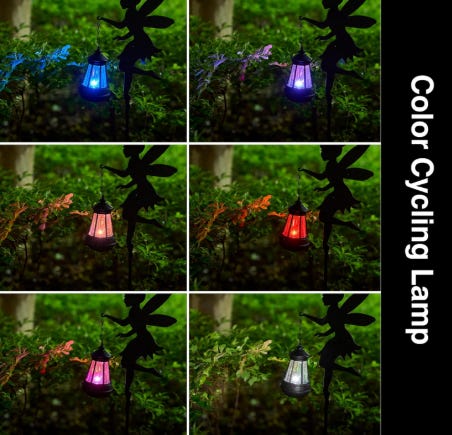6-part plan to create a dog-friendly fairy garden
Avoid choking hazards in your garden by thinking like your curious dog
Gardening is good for mental and physical health. It’s exercise, but it doesn’t always feel that way until you stand up from a lengthy squat or realize your back is a little sore from digging around in the dirt. Still, having a garden is calming and meditative. After a long day of watering, digging, sprinkling and planting, it’s amazing to unwind and watch all that hard work grow weeks (or months) later.
ADVERTISEMENT ~ Amazon
As an Amazon affiliate, I earn a percentage from purchases with my referral links. I know some consumers are choosing to boycott Amazon for its DEI removal. However, after thinking about this thoroughly, I choose to continue promoting intriguing products from small businesses, women-owned businesses and (specifically) Black-owned businesses who still feature their items on Amazon. All five of my Substack publications now include a MINIMUM of one product sold by a Black-owned business. (I have visited the seller’s official site, not just the Amazon Black-owned logo, to verify this.) If you still choose to boycott, I 100% respect that decision.

You know what else helps to unwind? Fairy gardens. Fairy gardens are one of those trends that gardeners may love because it reminds them of their childhood. Then, there are other gardeners who find it completely pointless and would rather focus on what, when and where to plant their next seeds. There is rarely an “in between” with these two groups.
That is, unless you’re a dog owner. Pet owners can assess any room and figure out what their dogs are most likely to break, chew, bend, hide, bury, sleep on or ignore entirely. However, pet owners who are intrigued by the idea of a fairy garden have a more dangerous concern though: choking hazards.
As whimsical as those miniature houses, bridges and flying figurines are, it’s all a chew toy for a nosey puppy. So, does that mean dog-owning gardeners cannot have fairy gardens? Not necessarily. However, in order to create a fairy garden, there has to be some strategy involved.
This six-part plan is a happy medium for creating a fairy garden and keeping pets safe.
ADVERTISEMENT ~ Amazon
As an Amazon affiliate, I earn a percentage for every purchase with my referral link.
Plan A: Find a safe location to place fairy garden pieces.
The same way a pet owner knows where to put the knives and the food in the kitchen is the same way they’ll know what height is needed to keep the dog away. For example, fairy garden figurines in a windowsill planter may work out well for a dog who is too short to reach the pot. The same goes for long-legged planters where the figurines can strategically be placed in dirt.
However, if the dog is a hopper or notorious for knocking large items over, this isn’t a good plant option regardless. And if the dog who would usually leave windowsill planters and tall-legged planters alone is suddenly way more interested in these plants, that fairy figurine may be too much temptation. It’s time for Plan B.
Plan B: Use barricades already in place for toxic plants.
Here’s your chance to take full advantage of hanging plants and hooks on the side of your home for those toxic plants. While there are non-toxic plants for dogs (ex. basil, creeping thyme, Irish moss, marigolds, rosemary, snapdragons, sunflowers, thyme), the number of plants that are toxic to dogs (ex. azaleas, foxglove, lilies, mushrooms) could fill a scroll. That’s not including cocoa mulch, which is also toxic to dogs. Then there are the toxic fruits for dogs and toxic vegetables for dogs that must be barricaded in the yard. If you don’t mind plant fences in your yard, fairy figurines can easily be placed inside of them — and line the plant fence with solar lights to see the figurines at night.
ADVERTISEMENT ~ Amazon
As an Amazon affiliate, I earn a percentage for every purchase with my referral link.








